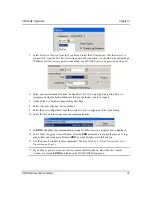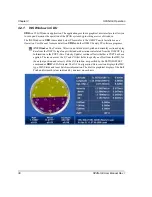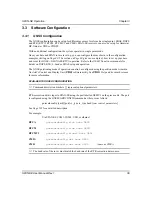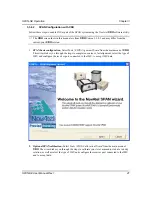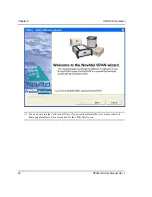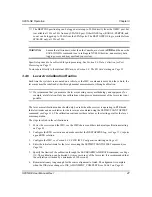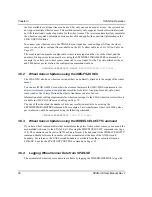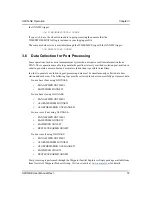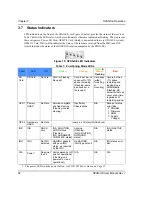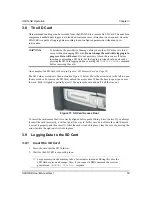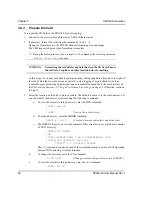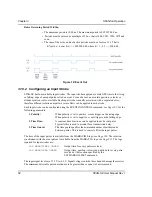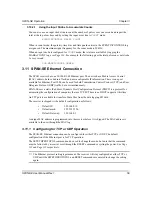
44
SPAN-SE User Manual Rev 1
Chapter 3
SPAN-SE Operation
3.4.1
Configuration for Alignment
All alignment and calibration activities should be conducted under open sky conditions for
maximum system performance.
A coarse alignment routine requires the vehicle to remain stationary for at least 1 minute. If that is not
possible, an alternate fast alignment routine is available. The fast or moving alignment is performed
by estimating the attitude from the GNSS velocity vector and injecting it into the SPAN filter as the
initial system attitude. See also
Section 3.4.1, Configuration for Alignment
for
more details on coarse and fast alignments.
3.4.2
INS Configuration Command Summary
This section gives a brief recap of the commands necessary to get the SPAN system running.
1.
Issue the SETIMUTYPE command
to specify the type of IMU being used, see the SETIMU-
TYPE command on
setimutype imu_ln200
2.
Issue the SETIMUTOANTOFFSET command
to enter the distance from the IMU to the
GNSS antenna, see
setimutoantoffset 0.1 0.1 0.1 0.01 0.01 0.01
3.4.3
System Start-Up and Alignment Techniques
WARNING:
If logging to a PC, ensure the Control Panel’s Power Settings on your PC are not
set to go into Hibernate or Standby modes. Data will be lost if one of these modes
occurs during a logging session.
The system requires an initial attitude estimate to start the navigation filter. This is called system
alignment. On start-up the system has no position, velocity or attitude information. When the system
is first powered up, the following sequence of events happens:
1. The first satellites are tracked and coarse time is solved
2. Enough satellites are tracked to compute a position
3. Receiver “fine time” is solved, meaning the time on board the receiver is accurate enough to
begin timing IMU measurements
4. Raw IMU measurements begin to be timed by the receiver and are available to the INS filter.
They are also available to you in the RAWIMU or RAWIMUS log, see
.
The INS Status field reports INS_INACTIVE.
5. The inertial alignment routine starts and the INS Status field reports INS_ALIGNING.
6. Alignment is complete and the INS Status field changes to INS_ALIGNMENT_COMPLETE.
The system transitions to navigation mode.
7. The solution is refined using updates from GNSS. Once the system is operating within specifica-








